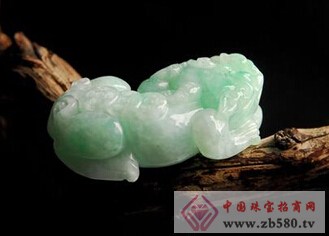Chinese people's hobby for jade and jade is not only because of its own beauty and excellent decorative effect, but also because it has a large potential for appreciation. Next, Xiaobian introduces the identification method of jade and jade.

Jade and jade identification is divided into two aspects:
1. Soft jade identification
Nephrite is usually not seen by humans because it is pursuing color, so it is not necessary to find ways to dye. Since ancient times, nephrite has been a precious jade. Therefore, there are counterfeit goods. The most common counterfeit items are serpentine jade, quartzite jade and calcite jade.
The sensory characteristics of nephrite, one is gloss, the characteristic grease luster, or the glass with grease feeling; the second is the structure, nephrite is a jade composed of fibrous small crystals interlaced, and can see small fibrous crystals. Interlaced, sparsely colored spots, but without transparent granular small crystals, also known as "speckles"; third is transparency, relative to the jade that may be confused, its transparency is relatively poor, though It is translucent to opaque, in fact most of the jade is slightly transparent, and translucent nephrite is not easy to see.
2. Hard jade identification
The surface of the jade has a star-shaped, linear and flaky flash. The color of jade is rich and colorful, which is not available in other gemstones. Therefore, it is necessary to look at the color not only by color and color, but also by the combination and distribution of colors.
The luster of jade is glass luster, grease luster or glass luster with grease. The transparent jade has a good jade and clear, and it is not available for other jade.
The smooth surface of the jade has a cool feeling on the face or lips.
Nylon is a generic designation for a family of synthetic polymers, based on aliphatic or semi-aromatic polyamides. Nylon is a thermoplastic silky material[1] that can be melt-processed into fibers, films, or shapes.[2]:2 It is made of repeating units linked by amide links[3] similar to the peptide bonds in proteins. Nylon polymers can be mixed with a wide variety of additives to achieve many different property variations. Nylon polymers have found significant commercial applications in fabric and fibers (apparel, flooring and rubber reinforcement), in shapes (molded parts for cars, electrical equipment, etc.), and in films (mostly for food packaging).[4]
Nylon was the first commercially successful synthetic thermoplastic polymer.[5] DuPont began its research project in 1927.[6] The first example of nylon (nylon 6,6) using diamines on February 28, 1935, by Wallace Hume Carothers at DuPont's research facility at the DuPont Experimental Station.[7][8] In response to Carothers' work, Paul Schlack at IG Farben developed nylon 6, a different molecule based on caprolactam, on January 29, 1938.[9]:10[10]
Nylon was first used commercially in a nylon-bristled toothbrush in 1938,[11][12] followed more famously in women's stockings or "nylons" which were shown at the 1939 New York World's Fair and first sold commercially in 1940.[13] During World War II, almost all nylon production was diverted to the military for use in parachutes and parachute cord. Wartime uses of nylon and other plastics greatly increased the market for the new materials.[14]
Nylon Fabric
Shaoxing Blange Import&Export Co.,Ltd , https://www.blg-yc.com
![<?echo $_SERVER['SERVER_NAME'];?>](/template/twentyseventeen/skin/images/header.jpg)